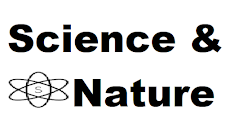Scientists have long explored the expanse of space in search of answers regarding the birth of the universe. In 1915, when Albert Einstein developed his theory of relativity, he provided the building blocks of the current concepts of gravity, spacetime, and cosmic development. However, with astronomers gazing deeper into space, there were some theories contradicting his view. Now, with the James Webb Space Telescope (JWST) giving us unprecedented views of the early universe, it seems Einstein was correct—once more!
The Cosmic Void That Shouldn't Exist?
Among the largest of the surprises in JWST's observations is the identification of huge, apparently vacant areas in the young universe. These "voids" contradict earlier models forecasting a more uniform matter distribution during the first several hundred million years after the Big Bang. Instead, JWST has shown pockets of extreme emptiness ringed by galaxies and structures that are already mature and well-developed—a feature Einstein's equations permit but many contemporary models were not able to foresee.
Relativity and the Expanding Universe
Einstein's general theory of relativity had predicted that spacetime itself was dynamic, being able to stretch and warp because of mass and energy. He originally had a "cosmological constant" to keep the universe static, but later dropped it when Edwin Hubble observed that the universe was expanding. With JWST, we now have evidence that this initial expansion was more nuanced than anticipated, with areas of high-density galaxy formation existing alongside enormous voids.
The voids seen by JWST indicate that the gravitational interactions of the early universe could have created structure quicker than we had supposed. This fits with Einstein's general relativity, which is a prediction of how matter agglomerates under the influence of gravity on spacetime.
The Early Universe Wasn't What We Thought
Prior to JWST, scientists anticipated that the initial galaxies would be small, irregular, and disordered, building up over time. JWST has then photographed enormous, mature galaxies looking only a few hundred million years old after the Big Bang. This has prompted experts to rethink how rapidly cosmic structures evolved and whether their understanding of dark matter, gravity, and even the Big Bang must be revised.
Einstein's equations, which were initially thought of as a stepping stone to the new physics, could still be the final key to understanding these surprising results. His predictions for the warping of spacetime, the influence of gravity in the cosmic structure formation, and even on dark energy remain consistent with our best observations.
A Testament to Einstein's Legacy
The James Webb Space Telescope has transformed our perception of the universe, but rather than upending Einstein's ideas, it has confirmed them. The observation of early-universe voids, the swift growth of galaxies, and the way gravity behaves on the biggest scales all lead back to Einstein's genius.
As we venture further into the universe with JWST and yet-to-be-developed telescopes, one certainty is that whenever we extend our knowledge frontiers, we can oftentimes find that Albert Einstein had already charted the course.





0 Comments